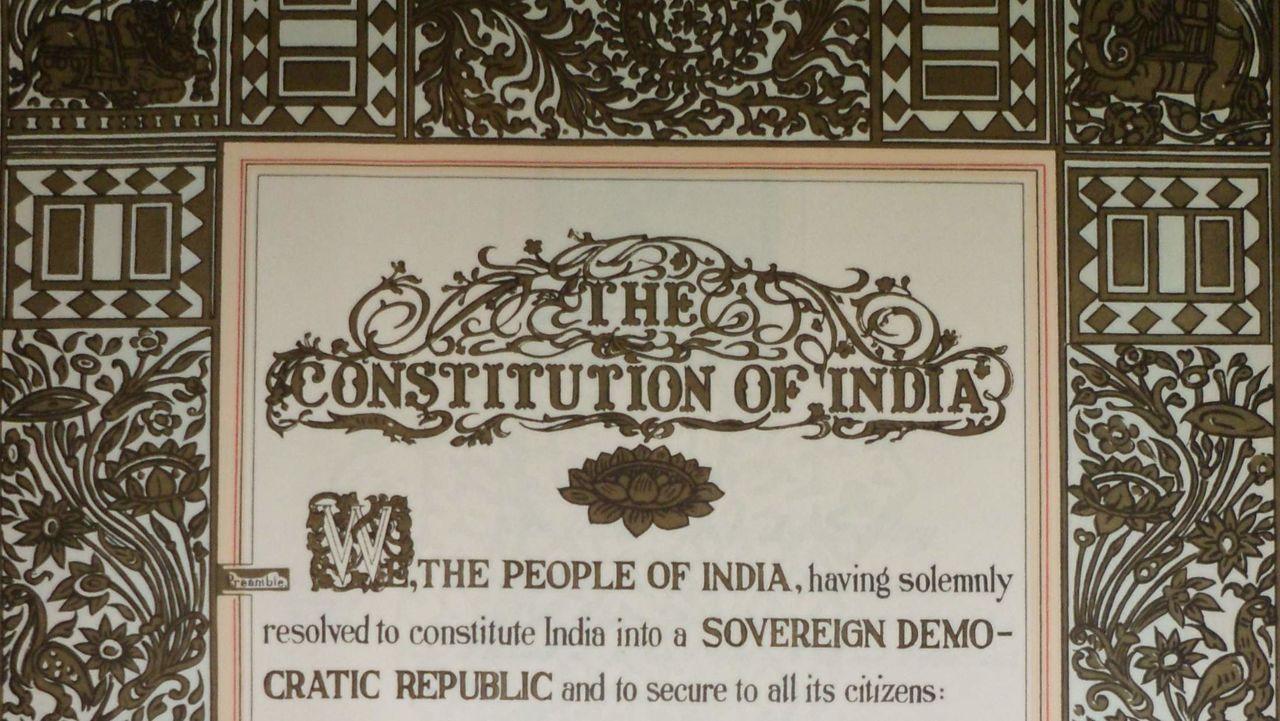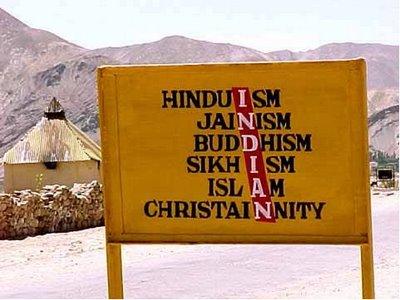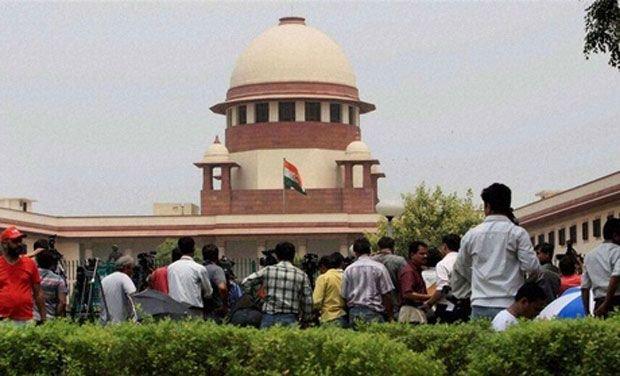Living Together: Secularism and the Making of an Indian Public Sphere
archive


Living Together: Secularism and the Making of an Indian Public Sphere
Introduction
The important essay authored by Richard Falk and Victor Faessel lays out clearly and cogently the dangers that stalk our world today: rabid intolerance, fear of the stranger, and the closing down of minds. Across the world, people seem to inhabit frighteningly blinkered worlds, and time-tested projects of living together have been breaking down. In some measure this breakdown has been propelled by the emergence of religion from the closet to which it had been consigned by Western Enlightenment philosophers. Since the end of the twentieth century religious identities have made more strident demands and engaged in state-breaking and state-making endeavors.
The increasing role of religion as politics in the public domain has unnerved western political philosophers. The boundary between the public and the private has simply evaporated, and there are new political forms and vocabularies in the public domain. Some scholars have proclaimed an end to the age of secularization and the collapse of secularism.1 In some quarters, the dismissal of secularism as an attribute of a democratic state is part of a generic rejection of Enlightenment rationality. For Habermas, however, we have to “go beyond” secularism to accommodate religious identities. In an October 2001 speech titled ‘Faith and Knowledge’, Habermas piloted the concept of post-secularism to the center stage of political theory. A post-secular society, he argued, is one that acknowledges the salience of religious identities. Conversely the religious minded must accept the authority of secular knowledge. However, the burden Habermas places on secular citizens is far less than the one borne by the religiously inclined. Since he does not allow religious vocabularies into the domain of policy making, these have to be translated into secular languages.
Habermas does not seem to appreciate the difficulty of translating religious into secular languages. Nor does he recognize the problems, the paradoxes, and the irresolvable dilemmas that are integral to the project of the co-existence of religion and the secular. He should have looked at India, a country that has learnt to live with both, not very well, but not too badly either.

Juergen Habermas
India had no choice in this matter. In the early nineteenth century, the colonial state embarked on a project of understanding, translating, codifying, and freezing the plural and decentered religion of Hinduism into the mold of Judeo-Christian notions of what religion is, and what it should be. These attempts provoked sometimes anxious, sometimes assertive responses by Indian intellectuals and political leaders.
Colonial interpretations, rationalist reformulations and orthodox defenses of Hinduism shaped an emerging Indian public sphere in which religion was debated, discussed, and ultimately made the anchor of a nationalist project. Reeling under a barrage of criticism from Christian missionaries, influential western philosophers, and colonial officialdom, Indian leaders and social reformers set out to refashion Hinduism along the doctrinal lines found in sacred texts. Indians were swept up in and swamped by discussions on religion—new interpretations, new modes of measuring and critiquing received wisdom, and anxious defenses by orthodoxy—in a newly constructed public sphere. In India, modernity arrives through processes of intense public reflection on and critique of religious identities and their politicization, not through the privatization of religion as in Europe.
Colonial interpretations, rationalist reformulations and orthodox defenses of Hinduism shaped an emerging Indian public sphere in which religion was debated, discussed, and ultimately made the anchor of a nationalist project.
Religion was of course not the only obsession of participants in the public sphere. Public intellectuals were concerned with the intricacies of imperial rule, the economics of exploitation and domination, and modes of cultural control through education, language policies, translations, and interpretations of history and tradition. But interpretations and reinterpretations of Hinduism occupied a dominant place in public debate. Ultimately the country was partitioned in the name of religion. But nationalist leaders held fast to the cherished value of secularism, freedom of religion, and rights of minorities. This commitment was made in 1928, when amidst heightened religious conflict between Hindus and Muslims, the Motilal Nehru Constitutional Draft authored by leading nationalists offered to the minority Muslim community protection of its religion and culture. In 1931 the Karachi Resolution on Fundamental Rights authored by the Indian National Congress emphasized that a post-independent state would be neutral to all religions.

However, the concept of secularism was elaborated neither by the leaders of the freedom struggle nor by the members of the Constituent Assembly. In the Assembly, discussions on secularism were a by-product of discussions on minority rights, personal codes, and the insistence by B. R. Ambedkar (representing the lower castes) that religion, which is the source of injustice, should be regulated by the state.
It was in 1951 that Jawaharlal Nehru, India’s first Prime Minister, spelled out the implications of secularism. Secularism, he said, did not mean a state in which religion is discouraged. It means freedom of religion and conscience, including freedom for those who may have no religion. It is perhaps not very easy to find a good word for secular, he said. Some people think that it means something opposed to religion, but this is not correct. For Nehru secularism means freedom of religion or irreligion; it means equality before the law and a state that honours all faiths equally and gives them equal opportunities.
Strictly speaking, we do not need secularism to ensure freedom of religion or the right not to be religious. Nor do we need secularism to mandate equality. Both these rights are protected by democracy. Secularism holds that the state shall not be aligned to one religion, which thereby becomes an official religion. This is fundamental to the right of equality, even in the weaker form of non-discrimination. It is precisely this interpretation that has been upheld by the Supreme Court of India.

Living Together
The coexistence of religion and secularism in India has been uneasy, unpredictable, and contingent. That the two can coexist at all is not surprising, given the capacity of Indian philosophy to contain contradictory phenomena, unlike Western philosophy that subscribes to neatness and to hierarchy of principles. In fact it is possible to trace three legally protected modes of coexistence between religion and the secular.
In some cases, the Indian Supreme Court has subordinated religious practices to democracy and social reform: gender justice, reforming the caste system, enabling the lower castes to enter temples, and banning untouchability. In 1996, the Supreme Court stipulated that the constitutional right to religion is not an absolute or an unfettered right. It is subject to reform for social welfare by appropriate State legislation. In other cases, the court has tried to ward off conflict through inaction. It still has to decide the Ayodhya case, whether a temple can be built on the site at which the sixteenth century Babri Masjid, which was demolished by the religious right in 1992, had stood.
Secularism holds that the state shall not be aligned to one religion, which thereby becomes an official religion. This is fundamental to the right of equality, even in the weaker form of non-discrimination.
In a third instance, anachronistic practices have been allowed to exist side by side. For example, according to the Jain practice of Santhara, persons are allowed to fast unto death in specific circumstances and under supervision. So even though suicide is, according to the Indian Penal Code, a criminal offence, the Supreme Court lifted a ban on Santhara in 2015. Jain philosophy, which sees the body as a prison of the soul, is completely different from the Christian view that the body is a creation of God and therefore suicide is a crime. The two philosophies are simply incommensurate, but the legal system has found a way to accommodate both.
India teaches us that although we have little choice but to accommodate religion in the public sphere, the outcome of the coexistence of secularism and religious politics is extremely untidy, unwieldy, and generates unexpected outcomes. It cannot be otherwise. Religion gives to us thick conceptions of the good, which enables us to understand our worlds. Political secularism as an attribute of a democratic state is a procedural norm that protects equality between all religious groups. Secularism in India not only recognizes the significance of religion in public life, it commits to equality between religious groups. In 1994, the Supreme Court ruled in the Bommai case that the Indian version of secularism stands for equality of all religions. Considering the specific circumstances in which state governments can be dismissed by the federal or the central government, the Court opined that the central government has the right to impose central rule upon a state government if the latter violates the principle of secularism, which is part of the basic structure of the constitution. These definitions have not only given a new meaning to secularism in a multi-religious society, they have protected pluralism.

Supreme Court of India
Conclusion
In India, secularism has contributed to the construction of a normative structure whereby people can pursue their faith unburdened by discrimination. Yet in many cases, secularism has not been able to overrule religious belief, for example the personal laws of minorities. This is perhaps natural, for the world of politics is shot through with discrepancies and irreconcilable paradoxes, and does not lend itself to neat ordering of principles. Attempts to bring neatness into either explanation or prescription for understanding contradictory practices can therefore prove flawed.
In such situations, we have to employ the resources of political imagination to make choices between different sorts of options that minimize harm. The dilemmas we find ourselves in might well prove intractable, but there is no reason why we cannot negotiate them with some degree of resourcefulness and ingenuity.

1 The term secular refers to non-religious practices, political secularism is used
Dillon, Michelle, 2010. "Can Post-Secular Society Tolerate Religious Differences?"
Habermas, Jurgen, 2006. "Religion in the Public Sphere: Cognitive Presuppositions
Between Naturalism and Religion. Translated by Ciaran Cronin, Cambridge, Polity.
Jacobsohn, Gary, Jeffrey 2003. The Wheel Of Law: India’s Secularism in
Madan, T.N, 1997. "Secularism in its Place." In Rajeev Bhargava, ed. Secularism
Nehru, Jawaharlal 1949. Jawaharlal Nehru Speeches, Volume One: September
Sen, Ronojoy, 2007. Legalizing Religion: The Indian Supreme Court and



